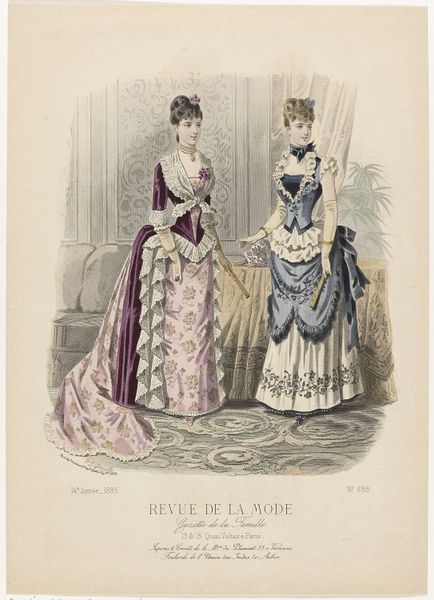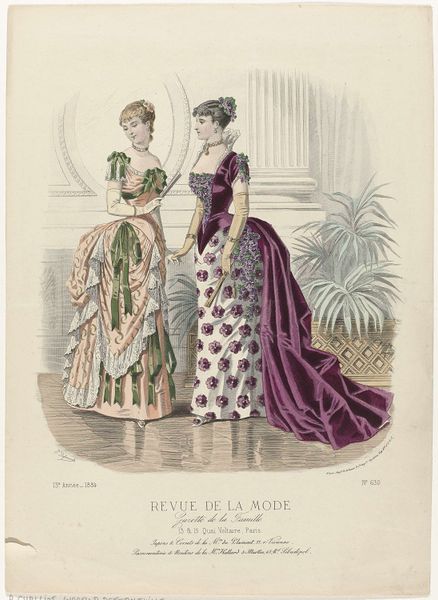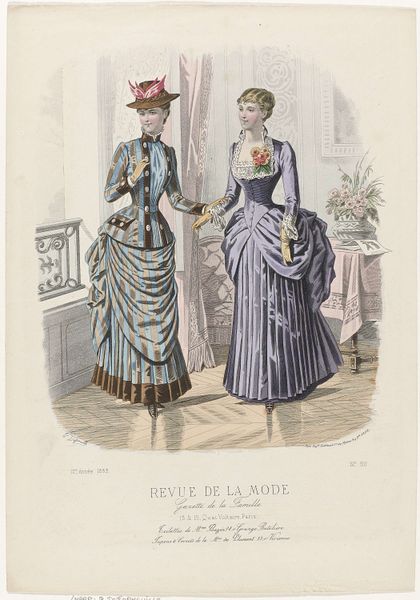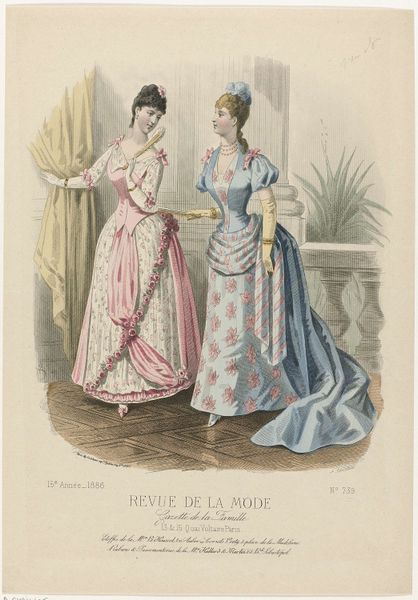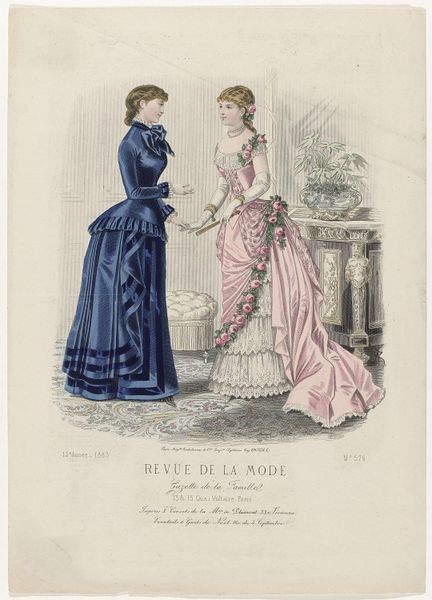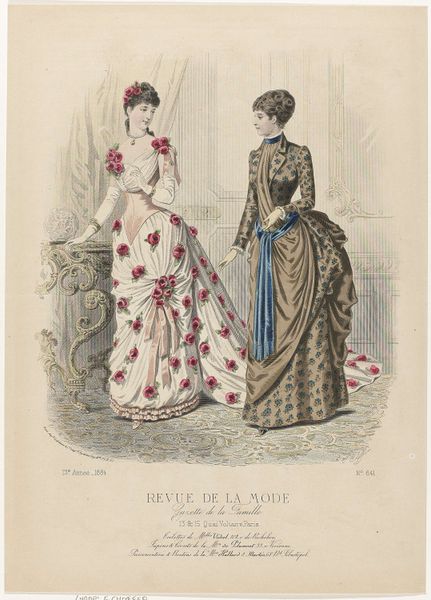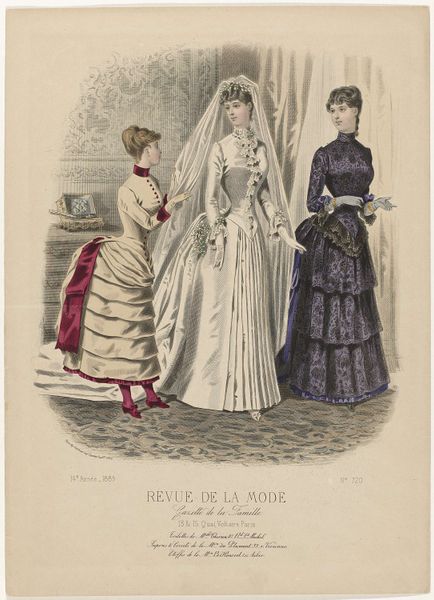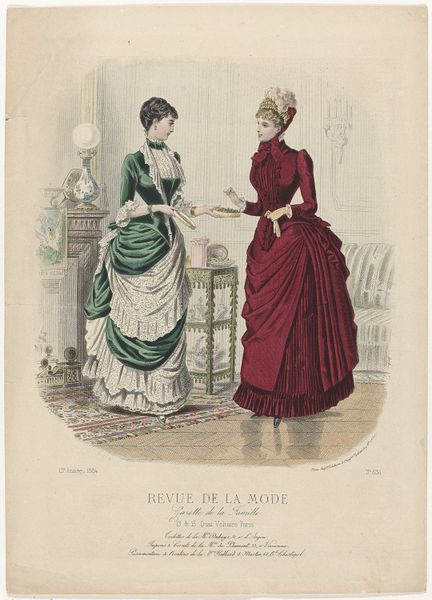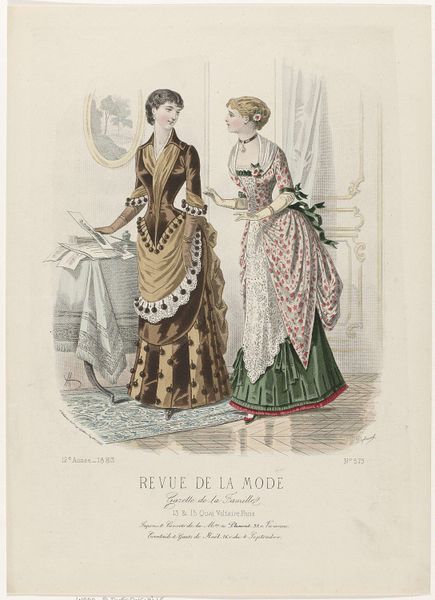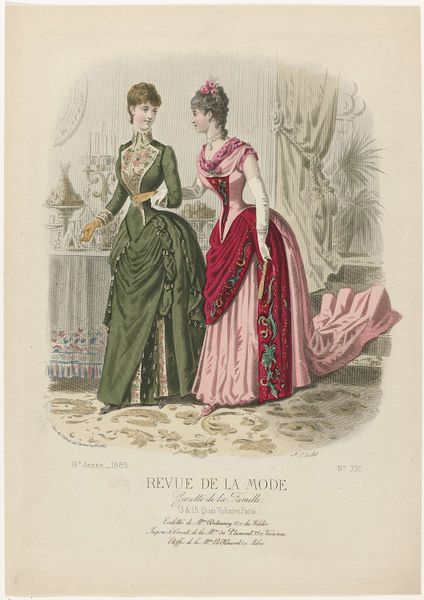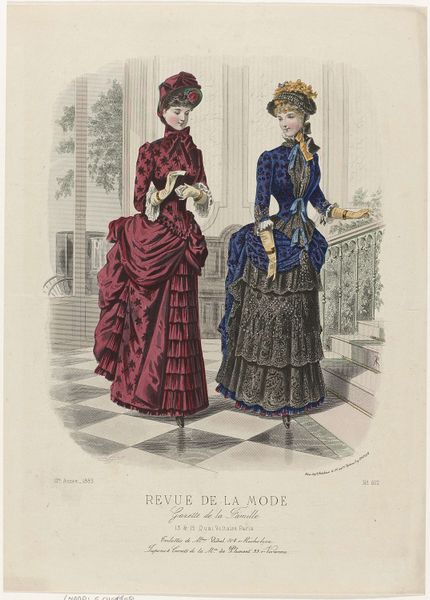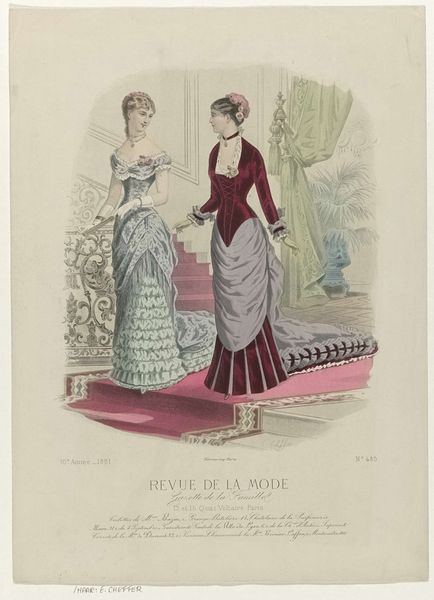
Revue de la Mode, Gazette de la Famille, dimanche 18 novembre 1883, 12e annee, No. 620: Jupons & Corsets (...) 1883
0:00
0:00
Dimensions: height 375 mm, width 268 mm
Copyright: Rijks Museum: Open Domain
Curator: This watercolor illustration by A. Chaillot, titled "Revue de la Mode, Gazette de la Famille, dimanche 18 novembre 1883," presents a fascinating glimpse into late 19th-century fashion. The materials and labor involved in producing these images for mass consumption are particularly interesting to me. Editor: My first impression is how confined these women look! Their garments are undeniably beautiful but also visually restrictive. Curator: Precisely. These fashion plates functioned as prototypes of the aspirational commodity; think about the means through which that design would disseminate – and how consumers would appropriate them. This required a whole infrastructure, not only of manufacture but of marketing. Editor: And what an image to market: the illustration conveys societal expectations of women’s bodies and presentation, highlighting the limitations placed upon them. Consider the constricting corsets, literally shaping them into a desirable commodity, like the couch in the background with a small waste. Curator: That’s astute. I agree that such presentation underscored the consumer culture developing at the time. What do you make of the choice to emphasize frills and delicate lace? How might the manufacturing practices, the looms, and the workers be a part of our consideration of its beauty? Editor: I think it plays into the romantic ideals and constructed innocence attributed to women of that era. The juxtaposition of delicate fabrics with the restrictive shapes of the garments seems deliberate and pointed. Where and how would the labor of this production been stratified? Curator: An interesting question given the rising socialist movements happening in the late 1800s. One must wonder how those sociopolitical factors impacted design, production and presentation in pieces like this. Editor: Looking at it through a contemporary lens is valuable because it opens up conversations about representation, consumerism, and agency that still resonate. Curator: Yes, by examining its production and material composition alongside the prevailing societal constraints of the period, this illustration serves as a crucial touchpoint for understanding evolving consumer markets and labor movements. Editor: I’m left pondering the dual nature of beauty and constraint it captures and the legacy it leaves behind.
Comments
No comments
Be the first to comment and join the conversation on the ultimate creative platform.

